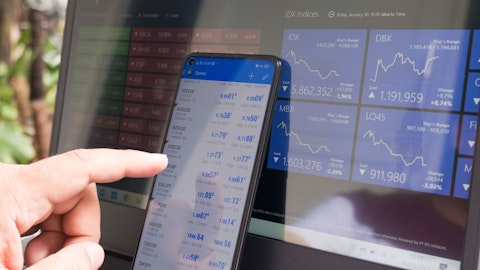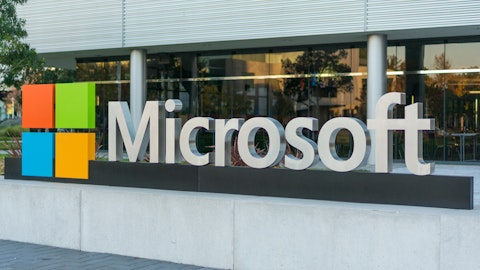Jeff Su: Okay. Bruce, let me try to summarize your first question. So Bruce’s first question is on our long-term growth CAGR, which we have said is to be between 15% to 20% from ’21 to ’26 CAGR period. So Bruce’s question, this year, C.C., just said we will decline around 10%. Under his calculation, I think he’s saying, well, this implies you should grow 25% the next several years, which, of course, this is a CAGR, but nonetheless. And so Bruce’s question is that, therefore, if that’s the type of growth, then shouldn’t that imply a much higher growth level for the overall semiconductor excluding memory industry. I think that is your question, Bruce. Am I correct?
Bruce Lu: Yes. What are the key assumptions for this quarter?
C. C. Wei: Okay. Let me handle this question. The – your rationale is correct. However, some of the factors may not be totally included. For one thing, in your model that the customer’s gross margin, 60% plus, I don’t think that will represent the average customer’s gross margin and maybe some specific ones. However, the other one is the market share. The market share factor, you assumed the constant, that is not – one thing that could be different than in your formula. So the semiconductor growth, right now, we are forecasting 4% to 5%. It may increase, but definitely, as you said, it won’t increase to 10%. But those longer-term semiconductor, excluding memory growth is still yet to be evaluated. Did I answer your question?
Bruce Lu: Yes. But the reason – the reason I do that is I’m assuming that you have like 1 million [ph] market share in the advanced node and also the growth is mostly coming from an advanced node, which customers growth lines is supposed to be higher. So I think that the gap is wide enough. That’s what I’m wondering right, whether I miss anything, which might be big enough to move the needle that might – investments that the management might – can give us some color?
C. C. Wei: I don’t – this is a factor. As far as the market share value, you might not totally included all the factors. That’s my perspective. But I cannot dig into the numerical comparison at this point here. What I mean, the market share is not just the advanced leading-edge technologies, but also the share of the outsourcing.
Jeff Su: So maybe, Bruce, if I summarize again, TSMC’s growth is driven by both the underlying structural megatrends but also by our technology leadership and differentiation. So our CAGR is a combination of those two factors.
Bruce Lu: Okay. Thank you.
Jeff Su: Do you have any…
Bruce Lu: Yes. My next question is regarding to the guidance changes. The previous guidance for the full year was long to mid-single digit, now is about like 10% decline. So the gap is like 5% of the total revenue, which is like quite sizable in terms of revenue. With that $3 billion, $4 billion highly concentrated in the second half of fourth quarter. Can you give us like what are the changes in terms of this shortfall? Where are the weakness come from?
Jeff Su: Okay. So Bruce’s, second question is looking at our 2023 full year guidance. He noticed last time, we had said low to mid-single-digit decline. This time, we have guided to around 10%. So his question is the delta of this seems to be all – a lot of it also in the fourth quarter. So what – is there any particular segment or market that is driving this? And what are the factors behind this? Is that correct, Bruce?





